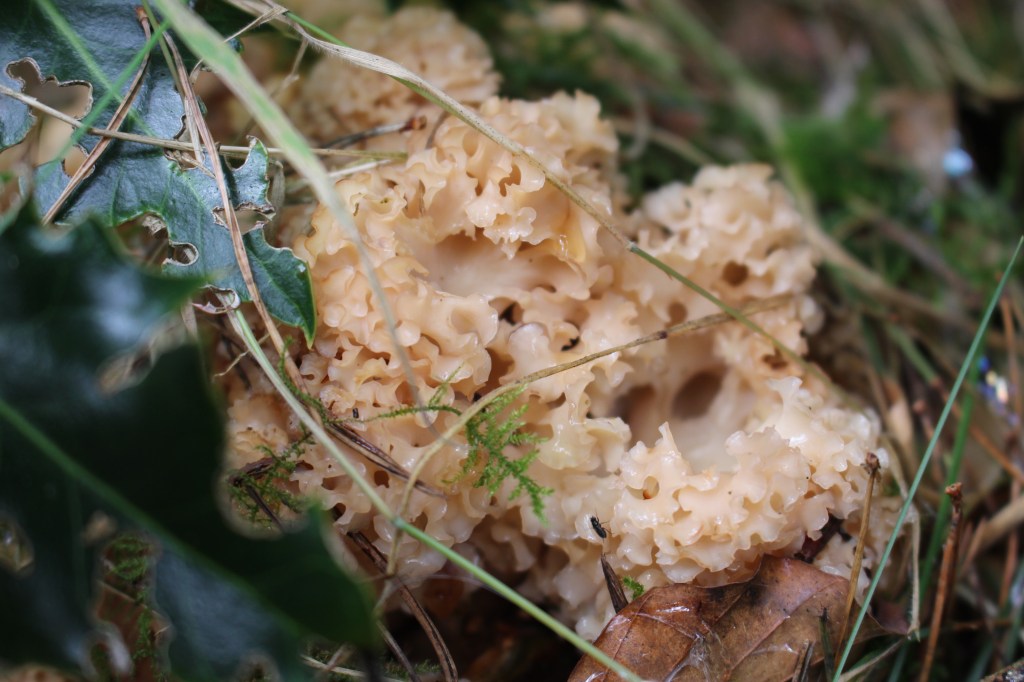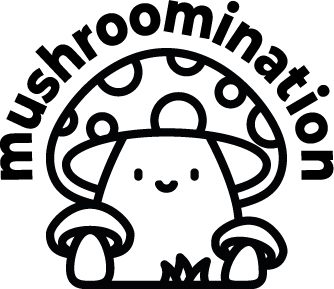
Sparassis crispa, or cauliflower fungus, to me, is one of the most distinctive and fun looking species I’ve had the pleasure to stumble upon in person. Emerging from the base of conifers, it is a parasite, causing brown rot and can also be saprobic i.e. living on the dead wood. Various sources differ, but it is not considered to be an aggressive parasite. These pictured here, I found both on Scots Pine in Co. Wicklow.
With their characteristic flattened lobes stemming from densely packed branches, the overall body of the fungus and its white to off-white, aging brown appearance, it is easy to see where it gains it common English name – Wood Cauliflower or Cauliflower fungus.
It is said to be edible – I can’t speak from experience – but also difficult to clean as maggots, worms, slugs and all types of critter-y insects, as well as leaf litter can all take refuge between the fronds. My Collins Gem Pocket Guide by Patrick Harding says it tastes like hazelnuts, I will gather the guts to forage some next time I see one!

Basic Profile
Scientific name: Sparassis crispa
Common names: Cauliflower fungus; Wood Cauliflower
Size of fruiting body: 40 x 20 cm
Spores: 5-7.5 x 4-5.5 µm
Gills: None – flat, curly lobes
Edibility: Edible when young, not when turning brown
Lookalikes: Grifola frondosa (hen of the woods) sometimes gets mistaken for Sparassis crispa though it is quite different, grows in rosettes, grows on oak trees (not conifers), has pores, and concentric patterns. Sparassis spathulata is much more similar but has fronds that are flat like a spatula and stand up.
On the Red Data List (extinct/critically endangered/endangered/vulnerable/near threatened): No
References:
Cate2 Database, managed and maintained by The Fungus Conservation Trust
National Biodiversity Data Centre
Red Data List, British Mycological Society
http://iucn.ekoo.se/, The Global Fungal Red List Initiative
Collins Complete Guide to British Mushrooms & Toadstools, Paul Sterry & Barry Hughes, 2009
Mushrooms and Toadstools of Britain and Europe, Edmund Garnweidner, 1994
Mushrooms, Patrick Hardy, 2013
The Encyclopedia of Fungi of Britain and Europe, Michael Jordan, 2004
